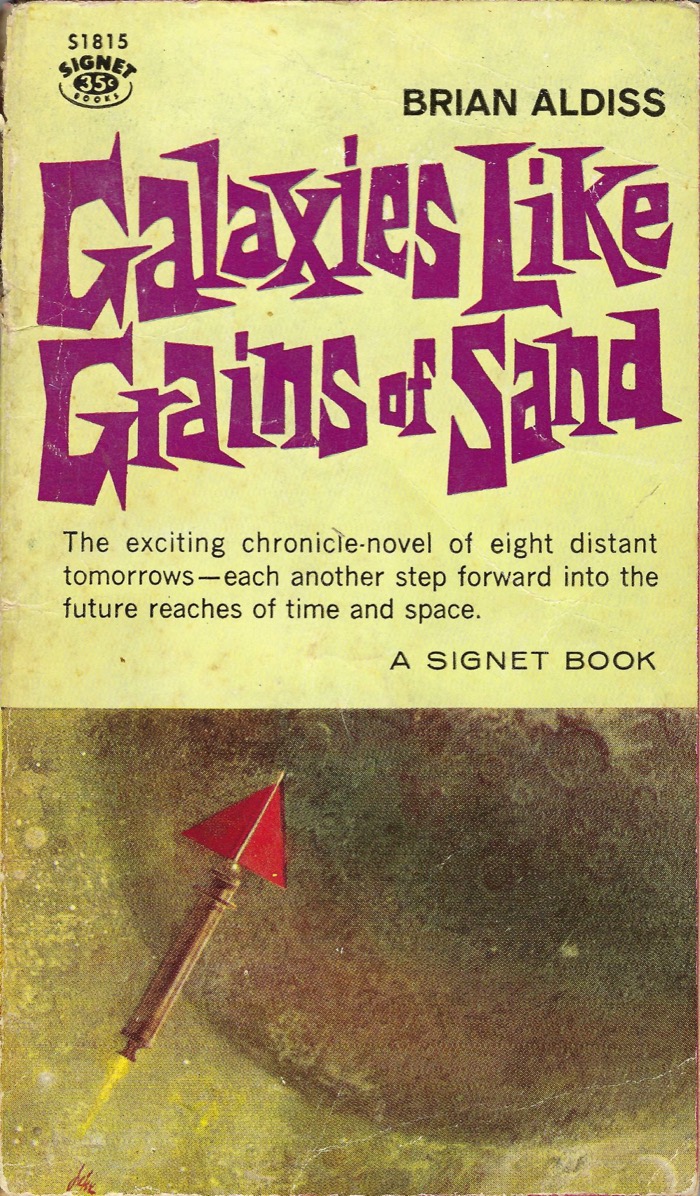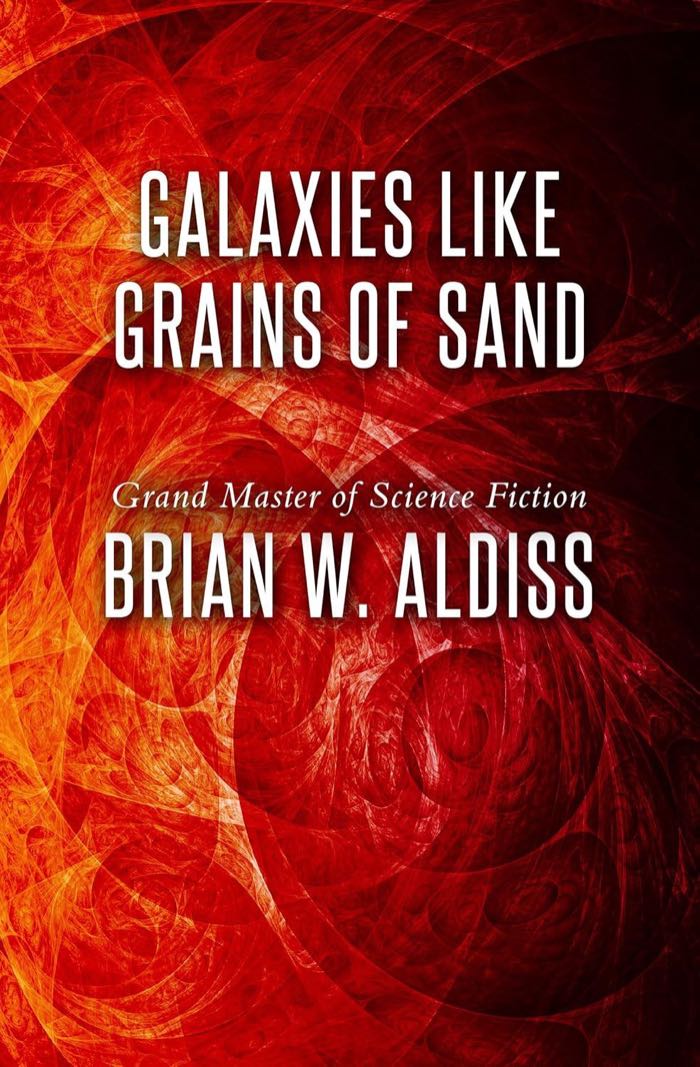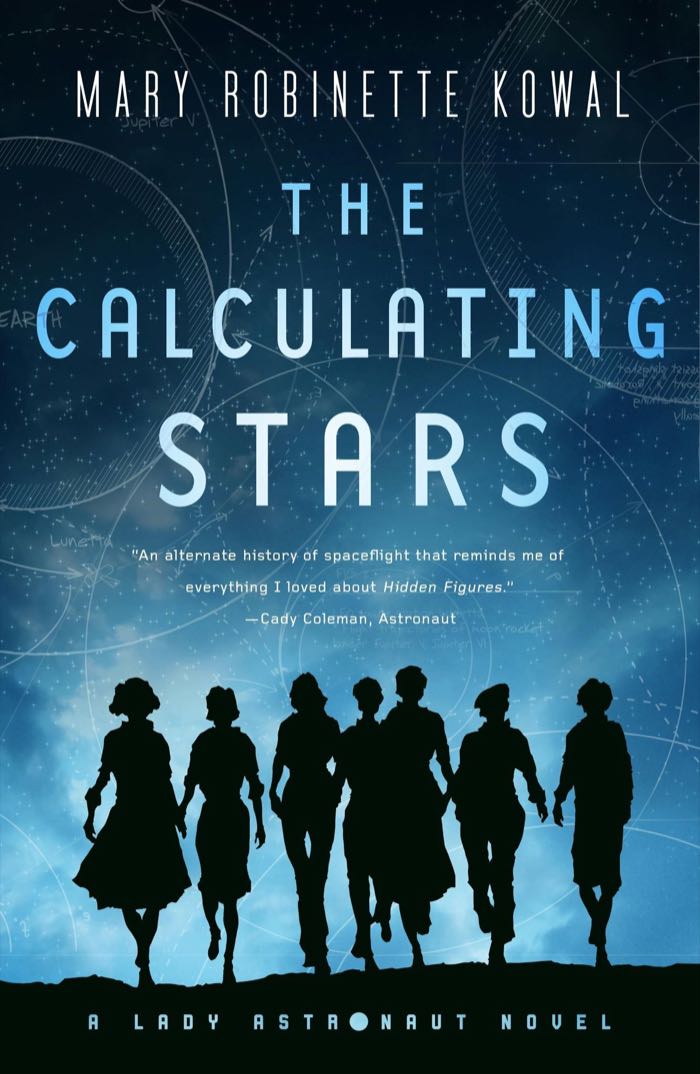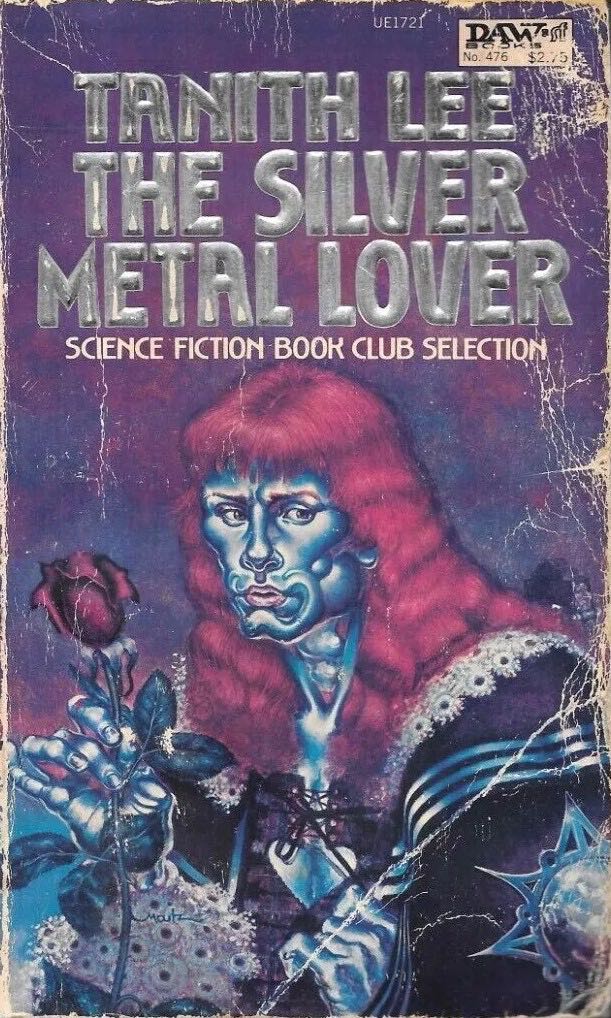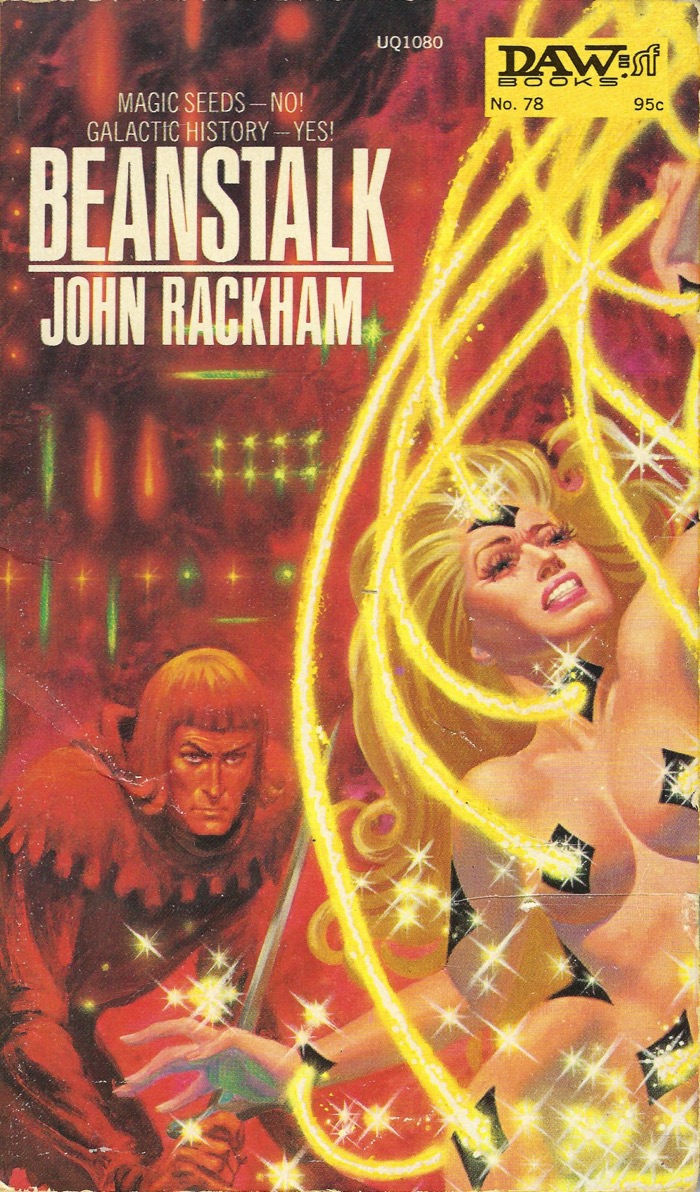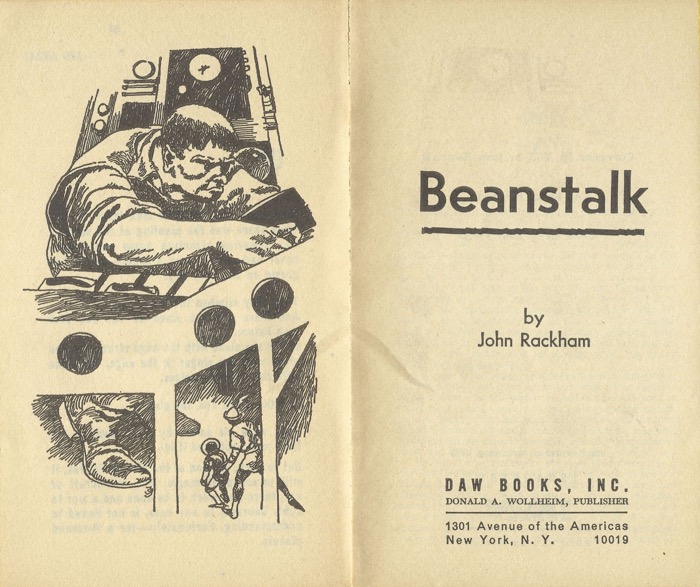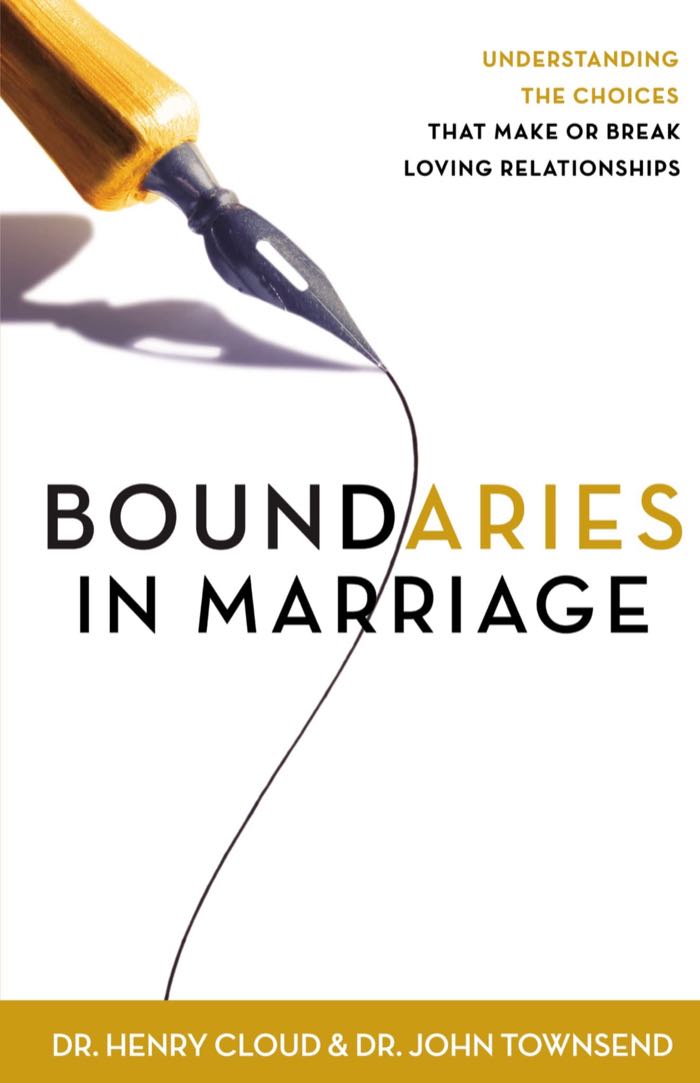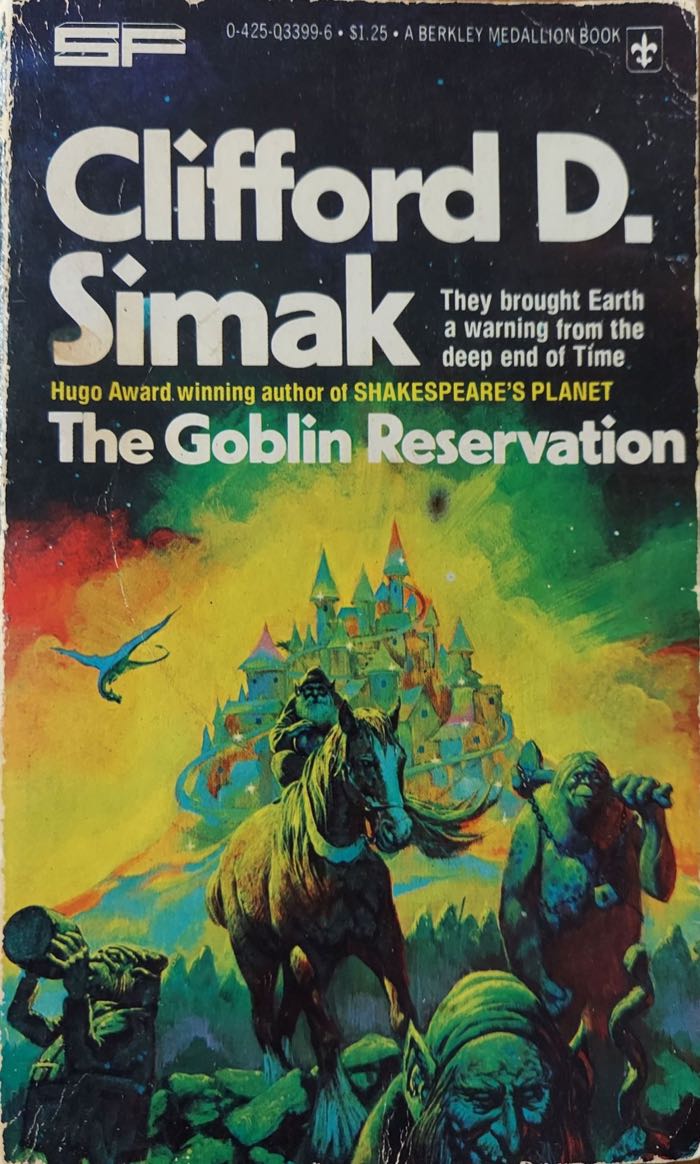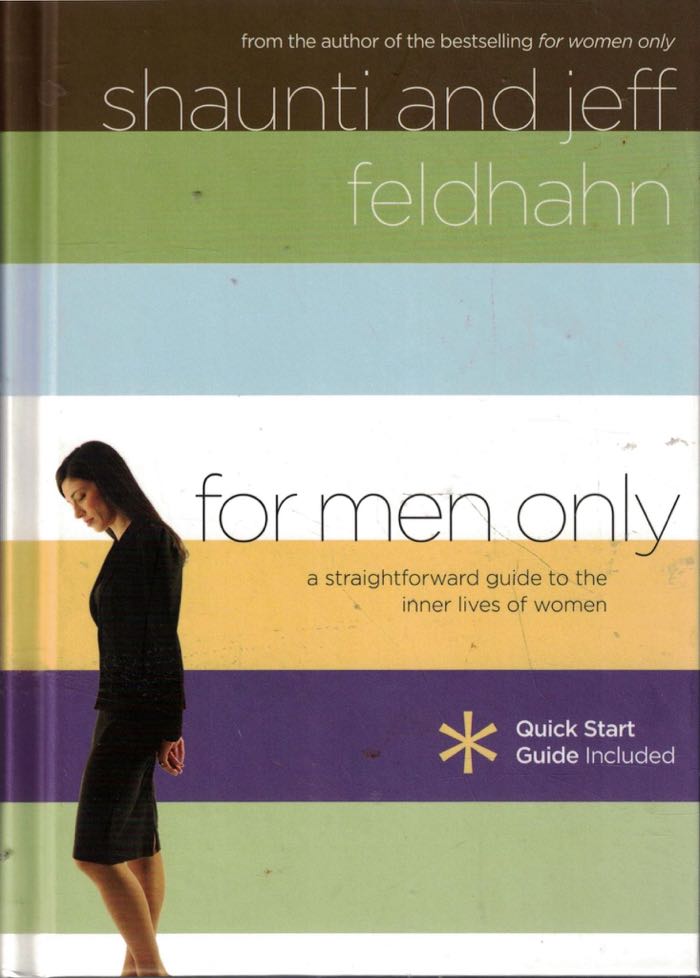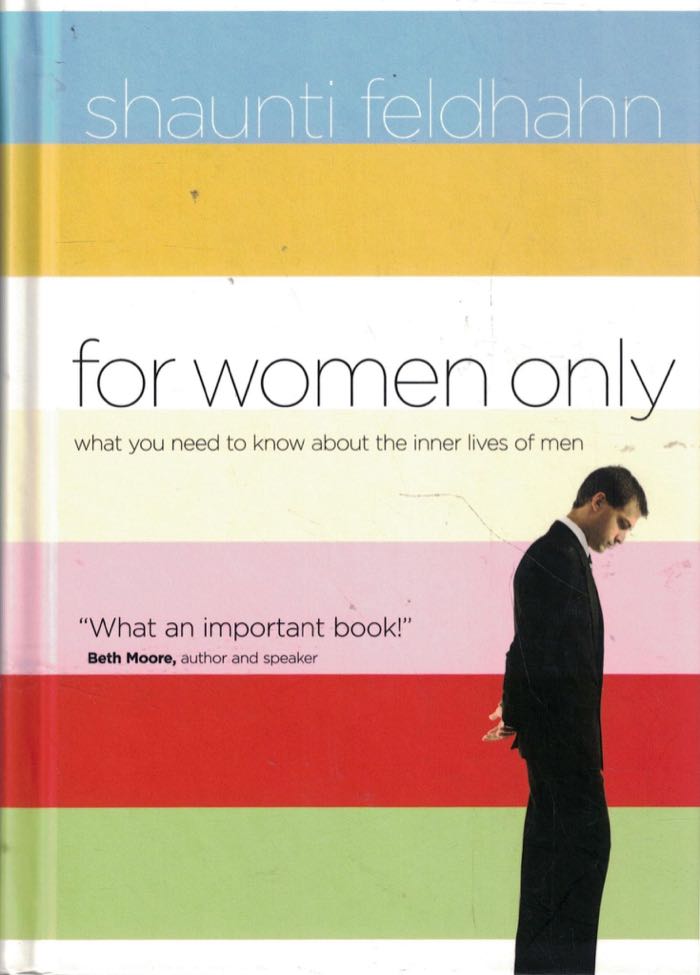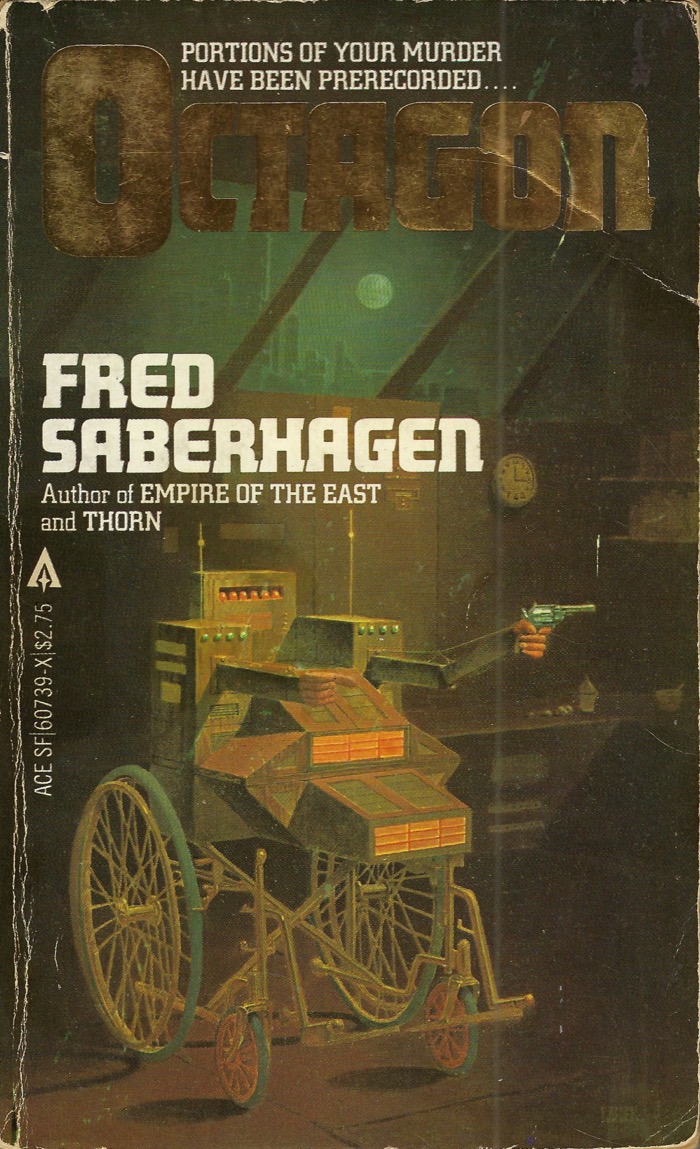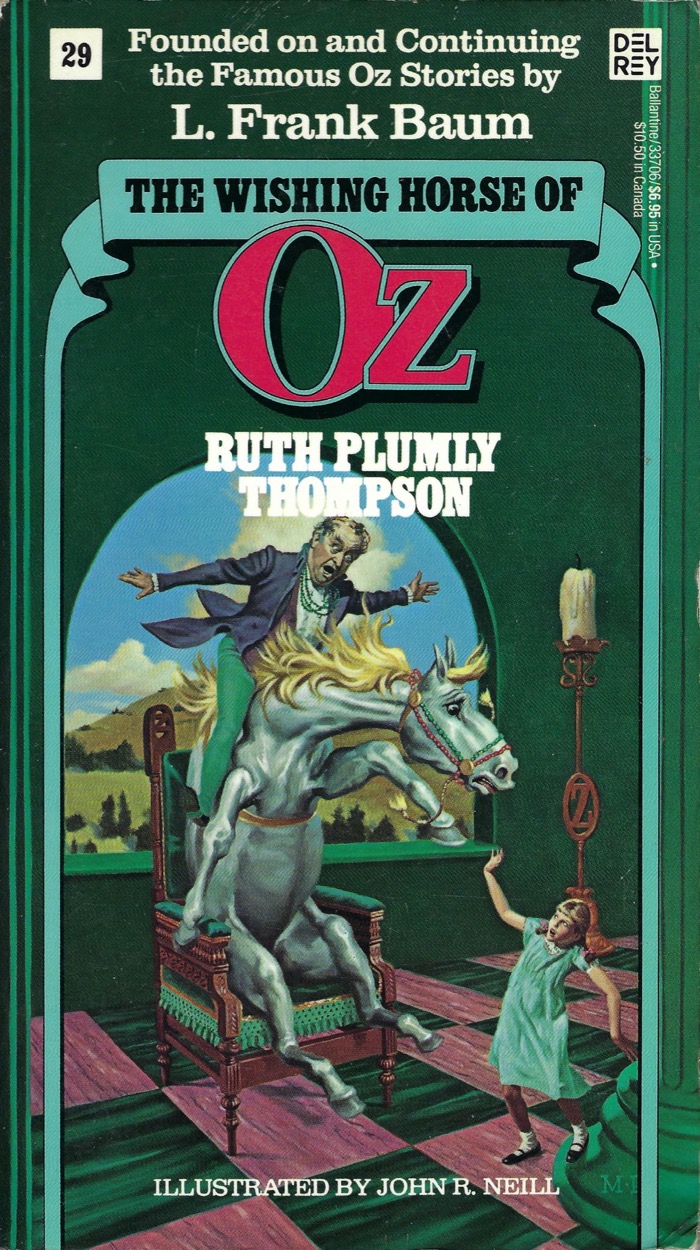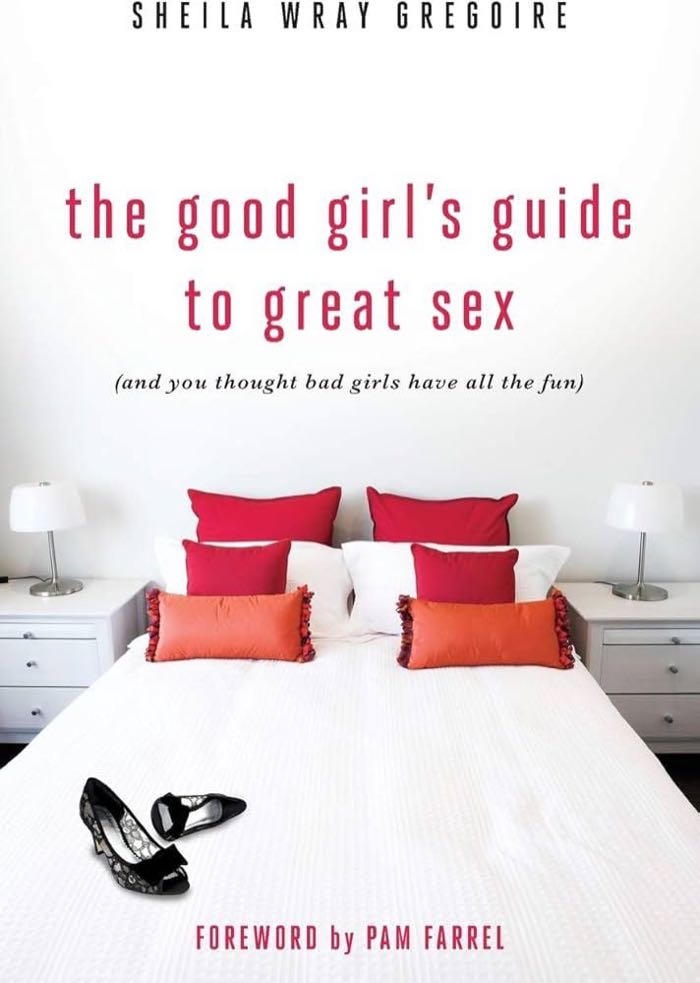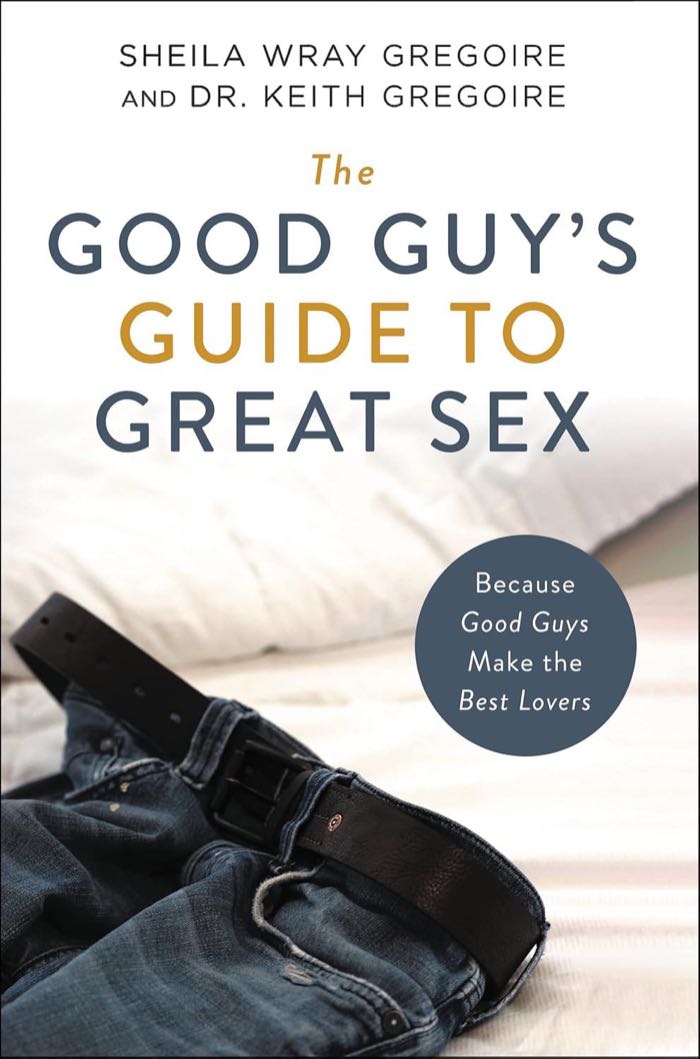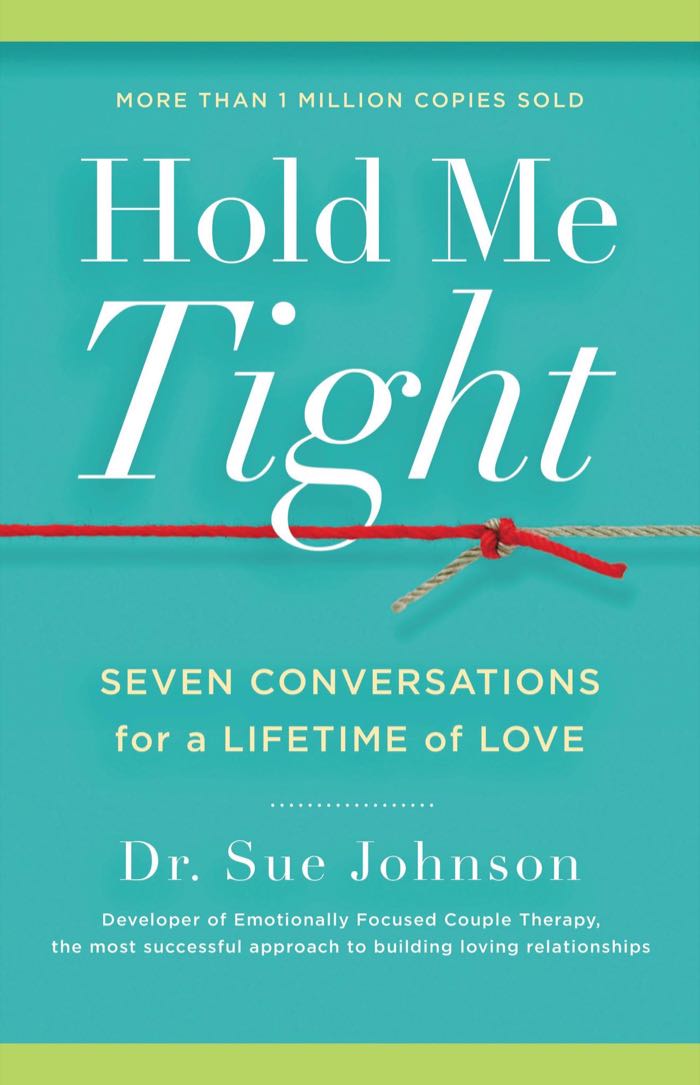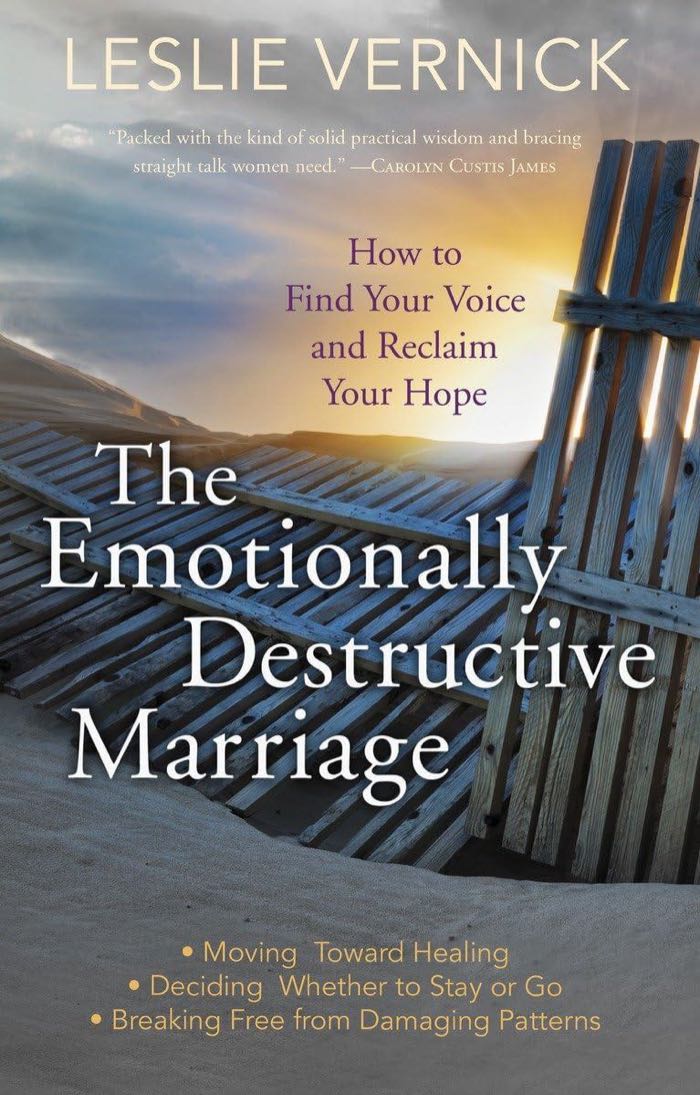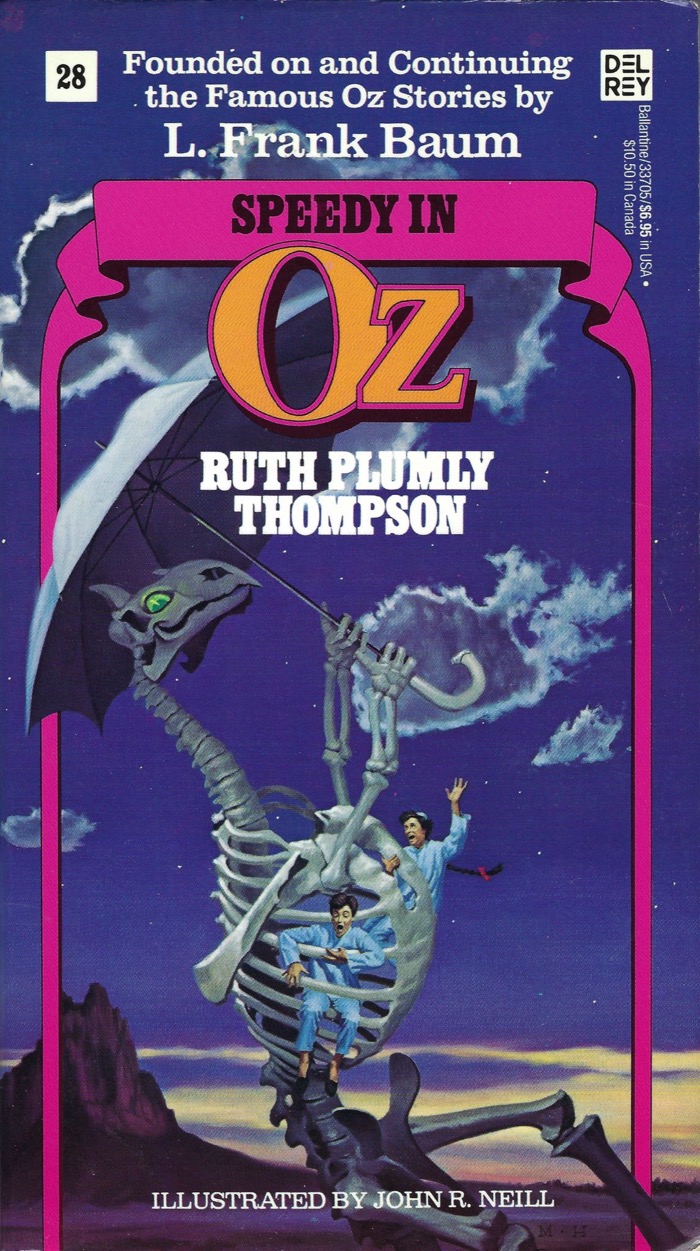Galaxies Like Grains of Sand
Reviewed date: 2025 Feb 22
Rating: 2
194 pages
Collection or fix-up?
This is a collection of stories turned into a fix-up novel by adding some introductory material to each story. It's hard to know whether to approach it as a collection or as a novel. I'm choosing to see it as a single sweeping story told in parts, so I'm categorizing it as a novel. That may be the wrong choice.
The broad sweep
The overarching story reminds me of Olaf Stapledon's Last and First Men, with maybe a hint of Blish's Cities in Flight. It's a narrative that gives us slices from the history of the entirety of mankind's existence. We start in our near future and continue into the inconceivable distant future and the eventual end of mankind. I enjoyed the first three stories, but after that it got really dumb and metaphysical and I hated it.
- The War Millennia - Out of Reach: Floyd Milton takes a portmatter unit to the Solite home world, and discovers why the Solites have never revealed the location of their world, and why they are so interested in collecting samples of Earth's flora and fauna. Solite is Earth in the future after a "supreme catastrophe" wiped out most life forms on the planet.
- The Sterile Millennia - All the World's Tears: J. Smithlao is a psychodynamician, whose job is to rouse men to anger—a hate-brace—which is the only way to fan the last sparks of ambition in mankind. In this dying world humanity is counted in the hundreds and humans prefer complete isolation and to never see, much less touch another human being. The species is kept alive only by the efforts of the Mating Center. Smithlao observes as one Ployploy (rejected by the Mating Center as unfit) encourages the advances of a wild man—with deadly consequences. She explodes when touched. The Mating Center implanted that response into her cells as a safeguard.
- The Robot Millennia - Who Can Replace a Man?: When the last man dies, the robots on the farm talk amongst themselves and try to decide what to do. The robots argue a lot, but usually defer to whoever has the highest class brain. Eventually they make their way to the mountains and find a lone surviving man.
- The Mingled Millennia - Blighted Profile: An inscrutable story, set in the Solite era.
- The Dark Millennia - O Ishrail!: A man calling himself Ishrail shows up and claims to be an exiled admiral from a galaxy-wide war that, conveniently, Earth knows nothing about. Will he be believed?
- The Star Millennia - Incentive: Apparently yes, Ishrail was believed. Later, the Galactic Council votes to admit Earth into the galactic Federation. However, Earth is skeptical. Galactic Minister Jandanagger Laterobinson makes his case to Isolationist representative Farro Westerby: by adopting the galactic language Galingua, the people of Earth can unlock the secrets of the universe—including interstellar travel by language rather than by cumbersome spaceships. This is so, so dumb, and I hate it so much. Also, Earth must consent to being renamed Yinnisfar. So dumb.
- The Mutant Millennia - Gene-Hive: An accidental mutation catapults mankind into a new stage of evolution: a shape-shifting hive of cellular goo that can be anyone and everyone and everything. The mutant cells try to absorb all life in the galaxy, but are eventually defeated by the forces of free men who wish to retain their individual existence rather than become part of a hive mind and body. So dumb.
- The Megalopolis Millennia - Secret of a Mighty City: An aspiring film-maker (well, solid-maker because this is the future and we're doing 3D TV) pitches a documentary about the real, authentic underbelly of the big city. What is this junk?
- The Ultimate Millennia - Visiting Amoeba: Our galaxy is running down. Whereas in our galaxy, man was the pinnacle of evolution, in the next galaxy man is just the beginning: the most primitive amoeba form from which higher levels will evolve. This was not worth my time.
The Calculating Stars
Reviewed date: 2025 Feb 21
Rating: 3
432 pages
Hugo
I finished this book in just two evenings. Thumbs up. There's a reason it won a Hugo and a Nebula.
Science fiction
The first section of the book is fantastic. A meteor strike wipes out D.C. and devastates the whole Eastern seaboard. Elma York and her husband Nathaniel (who both work for the government's space program) struggle to survive the immediate aftermath of the catastrophe. It's a gripping account. When they get situated at the new capitol in Kansas, Elma and Nathaniel help assess the meteor impact and calculate the long-term effect: it's an extinction event. It will take decades, but the meteor has jumpstarted an unstoppable runaway greenhouse effect that will boil the oceans and leave Earth uninhabitable.
Socially conscious alternate-history space-race fan fiction
The only solution is to become a multi-planet species. And so, enter the second and longer portion of the book: socially conscious alternate-history space-race fan fiction. Which is not terrible. It gives strong For All Mankind vibes, and it's fun. Really. But the actual science fiction (the meteor strike and the coming extinction event) takes a back seat to the fan fiction. A great deal of this part of the book is about Elma's anxieties around public speaking (she throws up a lot), and about the struggle for women's rights and for black civil rights, all in the context of a space race set a decade earlier than the one in our real-life timeline. That's not a bad story, but I liked the science fiction portion of the book far more.
The Silver Metal Lover
Reviewed date: 2025 Feb 19
Rating: 3
240 pages
Tanith Lee can write. The main character is an emotional teenage girl falling in love (with a robot) and taking her first real steps toward independence, and we see all the ups and downs, lows and highs, and despite the emotional chaos and unreliable narration we see the gradual move toward maturity and self-confidence. Jane (because that is her name) matures to the point that by the end of the book she is able to re-establish relationships with those she'd cut off earlier (like her mother and several of her friends) when she'd been too immature to interact with them. Nobody else grows or changes (well, except her friend Clovis, a little); they are all the same flawed people they always were. It's Jane that has matured.
Setting
The world Jane lives in has come through some catastrophic times, mostly linked to a near-impact by an asteroid. Jane's mother is one of the fabulously wealthy, and she lives in a house in the sky outside the city. The wealthy have every material need taken care of, and are waited on by robot servants. Jane is a spoiled rich girl whose only problem is an overbearing but also chronically absent mother. Well that, and she has fallen in love with a robot.
S.I.L.V.E.R.
The robot is a Sophisticated Format developed by Electronic Metals (E.M.) He is a musician and a lover, his skin is silver, and he captivates Jane instantly. Jane is ashamed at falling in love with a robot instead of a man, and she knows her mother will never approve. With help from her friend Clovis, Jane buys Silver from E.M. and runs away from home. She and Silver live together in a small flat in the slums, busking for rent money when Jane's mother cuts off her charge card. It's artistic and lovely; Jane vacillates between feeling deeply safe and grounded with Silver, and being emotionally insecure because she knows Silver is a robot and cannot really feel love for her. As Jane matures and becomes more emotionally resilient, Silver behaves more and more like a real human.
Tragedy
But this is a tragedy, not a comedy. Under pressure from a public that is terrified robots will steal their jobs, E.M. recalls all their Sophisticated model robots. Jane tries to escape with Silver, but they're caught. Silver is disassembled and melted down, Jane attempts suicide. Her friends save her, and she gradually recovers, now more mature and fully adult.
Lagniappe
Silver had a soul! The ghost of Silver speaks to Jane through a Ouija board, telling her to live her life for him, and that he awaits her eventual arrival on the other side. The book might have been better without this final chapter, but it's hard to say.
Beanstalk
Reviewed date: 2025 Feb 17
Rating: 2
158 pages
Beanstalk is a science fiction story that could conceivably be the original source for the fairy tale of Jack and the Beanstalk. Young Jack of medieval England is visited by Jasar of the Salviar Federation. He enlists Jack's help to bring down a key outpost of the Hilax Combine—an outpost manned by a giant. All this is, of course, part of an interstellar war between vast empires. Jack is quick on the uptake. He may not know what a spaceship is or how a force-field works, but he can aim a hand-beamer and pull the trigger. He's also handy with a bow, which comes in handy for killing giant "rats" and "cats" and "beetles" on the station when a beamer's power output would trigger the station's alerts.
On the station Jack and Jasar meet Haldar, a "pet" man that the giant (named Garmel) keeps on the station. They also find Silvana, a beautiful woman imprisoned by the giant as a singing plaything, a human songbird. In a disappointing turn of events which lays bare (I think) the moral bankruptcy of the author's worldview, Silvana is an entertainer—entertainer being not just a singer, but a full-service space hooker. You know, to entertain and boost the morale of the men fighting the interstellar war. She is very committed to her patriotic duty. *sigh*
Haldar helps Jasar sabotage the station while Jack rescues Silvana from her cage. Then the four of them destroy the station, defeat the giant Garmel, and escape safely back to Earth. Jasar leaves, conveniently stranding Silvana and Haldar on Earth. Conveniently, because Silvana can leave her duty to "entertain" the troops and instead be Jack's wife, and Haldar can settle down as Jack's step-father. Also conveniently because Earth will remain safely hidden, unknown to both the Salviar Federation and the Hilux Combine.
It's not a great story. The central conceit of a science fiction origin to Jack and the Beanstalk is a mildly interesting idea, but at novel-length the story needs to stand on its own. It didn't for me.
Boundaries in Marriage
Reviewed date: 2025 Feb 11
256 pages
Thumbs up on this one.
I found more to like about Boundaries in Marriage than I did about the original Boundaries book. There are better ways to understand interpersonal relationships than through boundaries, but Boundaries in Marriage gives practical examples of how boundaries can be used as a tool to spur personal growth in both the boundary-setting and the boundary-busting spouse. Plus—and this is a big one—Cloud and Townsend explain the ways boundaries can be misused and abused.
Boundaries are only built and established in the context of relationships. To run from a relationship as the first step of boundaries is not to have boundaries at all. It is a defense against developing boundaries with another person. The only place boundaries are real is within relationships.
Boundaries in Marriage is not the same as Boundaries on Your Spouse.
Ten Laws of Boundaries
- The Law of Sowing and Reaping - "Our actions have consequences." Don't bail out your spouse. The one who sows should reap the consequences. If one spouse allows the other to avoid responsibility for his or her poor behavior, this will cause long-term problems.
- The Law of Responsibility - "We are responsible to each other, but not for each other." Don't take ownership of your spouse's life. Do your part, but you can't be responsible for your spouse's actions or feelings.
- The Law of Power - "We have power over some things; we don't have power over others (including changing people)." You don't have the power to change your spouse. You only have power over your own actions--and even then, you are often dependent on the Holy Spirit for real internal change.
- The Law of Respect - "If we wish for others to respect our boundaries, we need to respect theirs."
- The Law of Motivation - "We must be free to say no before we can wholeheartedly say yes." Saying yes but grudgingly or out of fear is not a healthy long-term solution. Pay attention to your motivations when making a decision.
- The Law of Evaluation - "We need to evaluate the pain our boundaries cause others." Does that pain lead to injury or to growth? We can sometimes fail to set healthy boundaries because we mistake the pain they will cause for injury, when in reality the pain will bring growth and maturity.
- The Law of Proactivity - 'We take action to solve problems based on our values, wants, and needs." Be proactive to prevent bottled-up feelings from erupting in blowups.
- The Law of Envy - "We will never get what we want if we focus outside our boundaries onto what others have." If we focus on others instead of ourselves, we won't set boundaries because we're devaluing what we have (and the choices we have) and envying what others have.
- The Law of Activity - "We need to take the initiative in setting limits rather than be passive." Take initiative. Take risks. We cannot be passive if we want change.
- The Law of Exposure - "We need to communicate our boundaries to each other." A boundary that is secret or not communicated is neither a boundary or effective.
Values in marriage
- Love of God
- Love of Your Spouse
- Honesty
- Faithfulness
- Compassion and Forgiveness
- Holiness
The Goblin Reservation
Reviewed date: 2025 Feb 6
Rating: 3
192 pages
Plot synopsis
Starts with a bang. Our hero Professor Peter Maxwell is mysteriously duplicated in a transmitter incident, possibly by unknown aliens, and his other copy dies in an accident shortly thereafter. Also, Maxwell is hiding a big secret which is not revealed to us.
Back on Earth, Maxwell and a friend crashland a small plane in the Goblin Reservation. It's populated by actual goblins, fairies, and trolls. All the legendary creatures of fairy tales? They're real—some on Earth, some on other planets. All but dragons, it turns out. No trace of dragons has ever turned up. That's why Maxwell had left Earth in the first place—he was chasing after a possible dragon sighting. He didn't find anything; he ended up on a mysterious crystal planet instead.
The crystal planet is populated by ghosts of a dead race from a previous iteration of the universe (cyclical Big Bang theory) and it’s full of their accumulated information. They commissioned Maxwell to sell the information for them, because they can’t pass on to the next plane of existence until they have passed their knowledge on to another race who can use it.
Maxwell returns to Earth to find his life a mess. Maxwell works at Time University—or he did until recently, when he died and his vacant position was filled. Now he's unemployed. He's also homeless—he tries to return home but meets the woman who now lives in his apartment. She has a sabertooth cat as a pet. Fortunately he still has his friends: a Neanderthal named Oop (there is Time travel now) and a ghost named Ghost. They are delighted to see him, what with just having buried him and all.
Maxwell is quickly approached by a Wheeler, a hive-mind race. The Wheelers wish to purchase the crystal planet knowledge, and they have the price: the Artifact. Oh yes, the Artifact. It was found a while back and belongs to Time University, but the Wheelers have made a deal to buy it.
Maxwell doesn't trust the Wheelers so he tries to stop the deal. He even goes to examine the Artifact before the Wheelers take delivery. In doing so, he activates it. The Artifact awakens. It's a dragon.
The Wheelers attack the dragon. Maxwell discovers the truth. All the Little Folk? Goblins, fairies, trolls, etc. are from the same previous-universe iteration that the crystal planet is from. They attempted to colonize planets in this universe, but none of the attempts succeeded. They are all dying out. Therefore, the need to pass the knowledge on to another race, a race from this universe.
The Wheelers—the hive mind creatures—are also from the previous universe. They were beasts of burden. Their inferiority complex has caused them to desire to surpass their old masters, which is why they want the crystal planet knowledge. They are a vengeful, hateful race. The dragon? He's a pet, and the last of his kind. He was safely tucked away in the Artifact until such time as he could be revived and allowed to spend the remainder of his lifetime in a safe place: in the Goblin Reservation on Earth, with the last of his friends.
Fantasy and science fiction
I enjoyed the mysterious aliens snatch Maxwell's wave-pattern out of the ether and duplicate him plot, but I didn't care for the goblins and fairies and trolls, oh my! plot. I like science fiction. This is fantasy, even if it's given a science fiction explanation.
My verdict
Simak is a talented writer. He wove the pieces of this plot together with skill. It's a good story. I don't care for the fantasy elements, so that knocks it down a bit in my estimation. It's a decent story, but I likely won't return to it again.
Key words: Maxwell. Inspector Drayton. Mr. O'Toole. Lambert. Wheelers. Crystal planet. Coonskin system. Little Folk. Monty Churchill. Sweet October ale. The Artifact.
For Men Only: A Straightforward Guide to the Inner Lives of Women
Reviewed date: 2025 Feb 5
192 pages
I read the first edition of the book published in 2006, not the revised edition published in 2013.
Reluctant thumbs down.
This isn't as bad as the For Women Only book, but it's still full of outdated and untrue gender stereotypes. On the plus side, the book does talk about spontaneous vs. reactive libidos (which it calls assertive and responsive, respectively.) Big props for that.
All said, there is some value here, but you'll have to ignore the whole women are like this, men are like that message and just remember that these are personality traits that can apply to both women and men.
There are better books out there. Don't waste your time with this one.
For Women Only: What You Need to Know About the Inner Lives of Men
Reviewed date: 2025 Feb 5
228 pages
I read the first edition of the book published in 2004, not the revised edition published in 2013.
Thumbs down.
It relies heavily on stereotypes about men and women. It has a demeaning view of men, portraying them as creatures unable to control their sexual and lustful thoughts when confronted with something as dangerous as a woman entering their field of view. It's not true! Lust is not a constant struggle or an everyday battle.
Shaunti Feldhahn's big draw is that her book is backed up by research in the form of a survey. The problem is her survey questions are poorly worded: some of them are double-barrelled questions that even her survey-design expert warned her would yield bad results. She proudly admits this fact in the book. E.g., this question:
Think about what these two negative experiences would be like: to feel alone and unloved in the world OR to feel inadequate and disrespected by everyone. If you were forced to choose one, which would you prefer? Would you rather feel...?
- Alone and Unloved
- Inadequate and Disrespected
You can't conclude anything from that question, because it has four options but only breaks them down into two categories. And also, she only asked the men—she didn't compare the results from the men's answers to what women would have answered. And yet she concludes from her results that this reveals a difference between men and women: that women want love and men want respect.
Other questions have a list of possible answers that are designed to get the result she wants. E.g., this question:
Imagine you are sitting alone in a train station and a woman with a great body walks in and stands in a nearby line. What is your reaction to the woman? [Choose One Answer]
- I openly stare at her, and drool forms on my lower lip.
- I'm drawn to look at her, and I sneak a peek or glance at her from the corner of my eye.
- It is impossible not to be aware that she is there, but I try to stop myself from looking.
- Nothing happens; it doesn't affect me.
Drool? Seriously? And with the range of possible answers that Feldhahn gives, she's assuming that anything other than "Nothing happens; it doesn't affect me" is a "can't not be attracted" response, which she uses to conclude that hey, men are hardwired to want to ogle pretty women. But she doesn't give an option for noticing the presence of the woman without wanting to stare or ogle. It's either notice and want to stare, or don't even notice. But if you are sitting in a train station and another human being walks in, unless you are blind you will notice. The question even presupposes that you notice—otherwise how would you know she is a woman and not a man? It's impossible for this question to not give her the result she wants: that men are incapable of not wanting to stare at pretty women.
And then there's this question, where she gets a result but draws a conclusion about something that the question doesn't ask:
Many men have a mental set of sensual images that rise up or can be conjured up in their minds. Does this apply to you?In total, 87 percent of men say these images pop up in their heads.
- 62% - Yes, and these images are regularly changing; for example, the great body I just saw in the train station could be recalled hours or days later
- 25% - Yes, they are mostly images from years gone by
- 13% - No, I don't have a mental set of sensual images
The conclusion she draws is not what the survey results indicate. The survey result indicates that 87% of men answered that they have a mental set of images that "rise up or can be conjured up," but she concludes that 87% of men "say these images pop up in their heads." The survey doesn't tell us how many men have images popping up in their heads. It only asked how many men have a mental set of images. Nothing about whether or not they pop up.
This question isn't actually asking what Feldhahn thinks it's asking. She thinks it's asking whether men have sensual images pop up, unbidden, in their minds. What it's actually asking seems to be whether men have the mental ability to form visual images in their mind, or whether they are among the small percent who experience aphantasia, which is the inability to visualize things in their mind's eye.
I'd heard criticism of this book before reading it, but even so, I'd expected it to be better than this. This presents outdated stereotypes about emotionally immature men, backed up with poorly-designed survey questions.
Octagon
Reviewed date: 2025 Jan 21
Rating: 3
272 pages
Somebody is murdering people, and it's the computer.
The Wishing Horse of Oz
Series: Oz 29
Reviewed date: 2025 Jan 18
244 pages
This had a slow start, but really picked up around chapter 5.
The Good Girl's Guide to Great Sex: And You Thought Bad Girls Have All the Fun
Reviewed date: 2025 Jan 16
272 pages
Not bad. I read the first edition of the book (published in 2012) which is not informed by all the research that went into the second edition (published in 2022.) If you're going to read it, get the second edition.
The Good Guy's Guide to Great Sex: Because Good Guys Make the Best Lovers
Reviewed date: 2025 Jan 15
256 pages
Good.
Hold Me Tight: Seven Conversations for a Lifetime of Love
Reviewed date: 2025 Jan 14
300 pages
Good. This seems to get at the heart of marriage, which is a need for emotional connection. A lot of other marriage books talk about behaviors and methods for communication, but those stem from and spring out of the principles described in this book. One caveat: this book works for those in marriages where both people who genuinely have each other's best interest in mind. This will not work for destructive marriages where one person is abusive.
The Emotionally Destructive Marriage: How to Find Your Voice and Reclaim Your Hope
Reviewed date: 2025 Jan 13
240 pages
Good.
Speedy in Oz
Series: Oz 28
Reviewed date: 2025 Jan 1
239 pages
Speedy is back in Oz, this time with a living dinosaur skeleton named Terrybubble.
